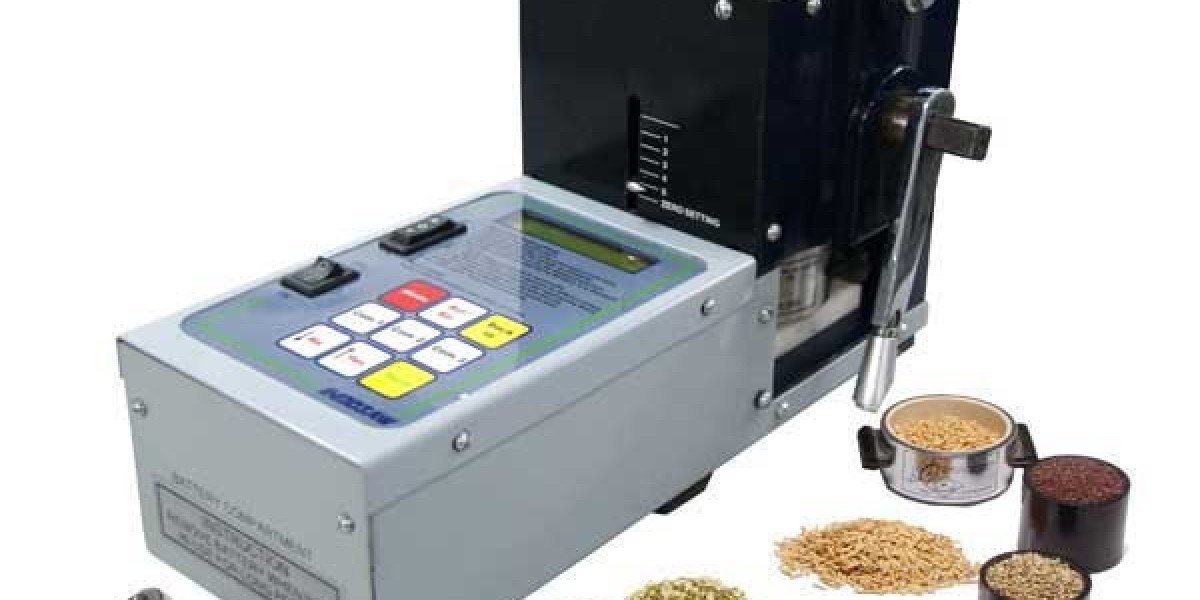Rice is one of the most important staple crops in the world, feeding more than half of the global population. Ensuring its quality, especially after harvest, is crucial for both farmers and consumers. One of the most critical aspects that affects the quality, shelf life, and market value of rice is moisture content. Improper moisture levels can lead to spoilage, fungal growth, or weight loss, directly impacting profits and food safety.
This is where rice moisture meter come into play. These devices provide a fast, reliable way to measure the moisture content of rice, helping farmers, millers, and traders make informed decisions during storage, transport, and processing. In this article, we’ll explore how rice moisture meters work, the types available, and why they are essential in the rice production industry.
- What Is a Rice Moisture Meter?
A rice moisture meter is a handheld or benchtop device used to measure the percentage of moisture content in rice grains. These tools are specially calibrated for rice and other grains, allowing users to assess whether the rice is at a safe moisture level for storage or processing.
Excessive moisture can lead to fermentation, mold growth, or insect infestation, while overly dry rice can result in weight loss and decreased market value. Accurate moisture readings help determine the right time to harvest, store, or sell rice, minimizing risks and losses.
How Do Rice Moisture Meters Work?
Rice moisture meters work based on the physical and electrical properties of the rice grains. There are two main types of moisture meters:
1. Resistance (Conductivity) Type
This is the most traditional method and is commonly used in many grain moisture meters.
How it works: The resistance meter measures the electrical resistance between two electrodes when a sample of rice is placed between them.
Principle: Water is a good conductor of electricity, while dry rice is not. The more moisture present in the grains, the lower the resistance.
Application: The meter converts the resistance measurement into a moisture percentage, using built-in calibration for rice.
2. Capacitance (Dielectric) Type
This is a more modern and widely used method, especially in portable grain moisture meters.
How it works: The rice sample is placed inside a chamber, and the meter measures the dielectric constant (capacitance) of the grains.
Principle: Water has a much higher dielectric constant than dry matter. As moisture content increases, so does the dielectric constant of the grain sample.
Advantages: This method is faster, more consistent, and less destructive to the sample than resistance meters.
Some advanced models combine infrared sensors or weighing mechanisms for even more accurate results, often used in laboratory or industrial settings.
Why Is Measuring Rice Moisture Important?
1. Prevents Post-Harvest Losses
Improperly dried rice can spoil quickly. If the moisture content is above the safe storage level (usually around 13-14%), it can promote:
Fungal growth
Insect infestation
Germination or discoloration
Fermentation and bad odors
Moisture meters help ensure that rice is dried to the appropriate level before storage, minimizing spoilage and preserving quality.
2. Ensures Safe Storage
For bulk storage in silos or warehouses, rice needs to be within the correct moisture range. Even a small increase in moisture can lead to hot spots, mold, or deterioration. Moisture meters allow real-time monitoring and help decide whether re-drying or aeration is needed.
3. Improves Milling Efficiency
High moisture rice can break during milling, reducing head rice yield. Measuring and adjusting the moisture level before milling results in better grain integrity and higher profits.
4. Supports Fair Trade and Pricing
Moisture content directly affects weight and value. Wet rice weighs more but is less valuable because of spoilage risk. Traders use moisture meters to ensure transparency and fair pricing. In many countries, moisture content is a standard quality parameter in purchase agreements.
5. Compliance with Standards
Exporters and processors must comply with national or international quality standards. These standards usually specify moisture limits for different types of rice (e.g., paddy, brown, or white rice). Accurate measurement ensures compliance and reduces the risk of rejected shipments.
Features to Look for in a Rice Moisture Meter
When selecting a rice moisture meter, consider the following key features:
1. Accuracy and Calibration
The meter should be factory-calibrated for rice and ideally allow for user calibration. Accuracy within ±0.5% is desirable for commercial use.
2. Range of Moisture Measurement
A good meter should cover a range from at least 8% to 30% moisture content to handle various post-harvest stages.
3. Sample Size and Type
Some meters require small samples (about 10-20 grams), while others can process larger volumes. Ensure the meter supports the type of rice you work with (paddy, brown, or milled).
4. Portability and Durability
Handheld meters are ideal for field use. Look for compact, battery-operated models with a rugged design and a clear display.
5. Speed of Measurement
Most digital moisture meters provide instant readings in less than a minute. This is crucial for high-throughput environments like drying centers or trading hubs.
6. Data Storage or Connectivity
Some advanced models offer data logging, USB or Bluetooth connectivity, allowing you to track and analyze moisture trends over time.
Common Use Cases of Rice Moisture Meters
During Harvesting: Farmers check rice moisture to determine the right time to harvest. Too wet, and it's risky to store; too dry, and yield may be lost.
At Drying Centers: Operators monitor moisture levels to ensure rice is dried uniformly and efficiently.
Before Storage: Moisture levels are checked before rice is loaded into storage facilities to avoid spoilage.
In Trade and Export: Buyers and sellers use meters to verify quality and determine price fairly.
In Milling Plants: Operators ensure the rice has the right moisture content to minimize breakage and maximize yield.
Conclusion
Rice moisture meters are indispensable tools in modern agriculture. Whether you’re a smallholder farmer, a rice mill operator, or an exporter, accurate moisture measurement is essential for maintaining rice quality, reducing losses, and ensuring fair trade.
By understanding how these devices work and choosing the right one for your needs, you can gain better control over your post-harvest process and contribute to a more efficient, sustainable rice supply chain.








